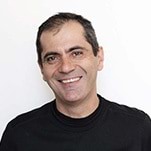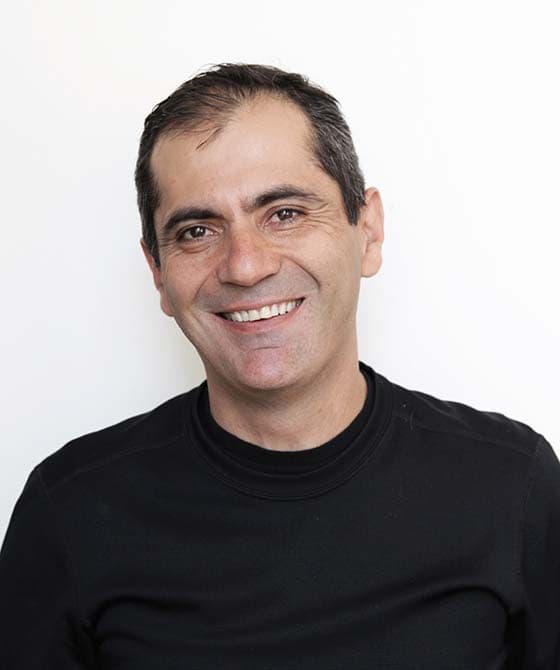Studio Libeskind is sending out a message for a new kind of building: project yourself into the future while respecting the past
Yama Karim: Principal Architect at Studio Libeskind, New York.
Interview to Yama Karim: Principal Architect at Studio Libeskind, New York.
Yama Karim studied architecture at Columbia University in New York and at the University of California in Berkeley. After working at the Polshek Partnership design studio (now called Ennead Architects), he started collaborating with Daniel Libeskind in Berlin at the end of the 1990’s and joined the Libeskind design studio in 2003. He has taught at the Swiss Federal Institute of Technology in Zurich and at the Pratt Institute of Brooklyn in New York and is currently working on the CityLife complex in Milan and the Corals residential complex in Keppel Bay, Singapore.
The CityLife project has been modified over the years. Can you tell us about the difficulties and processes that have influenced it? In general, how much does the execution phase contribute to giving a new form to the original idea?
It is inevitable that the original idea and the architect evolve with respect to the original idea; they have to allow themselves to be influenced by what the city itself transmits to the work. Architecture creates structures and new profiles for a city; it isn’t an art exhibition.
It often takes 15 or even 20 years to go from the design phase to the completion of a building and in the meantime, there may be unforeseen events or an evolution in design. It becomes necessary, therefore, to carry out the modifications as they occur so that the project is always up to date.
As far as CityLife is concerned, with this project – and with many other large-scale projects such as Ground Zero – we have had to be very flexible. The complex has been built where the market required it and where there was demand. It is important to accept changes, treat them as opportunities and allow the project to transform. In the case of CityLife, I let the project come to life and then evolve rather than just design it and say “okay, it’s done”. I am really satisfied not only with the overall result, but also with the enthusiasm of the people for the new shopping district and park. Including a metropolitan rail link has undoubtedly encouraged access to the shops and the success of the whole complex. The final result is really good and we can’t wait to inaugurate the tower.
In large cities such as New York, Berlin and Milan, but also in smaller towns and cities, the issue of re-using and restoring historical buildings and reconverting large urban areas is quite a big problem. What is your opinion and how do you tackle this issue?
For us at Studio Libeskind this issue does not represent a problem. A lot of people feel very nostalgic about the past. We are firmly convinced that we need to preserve the past and our history, but we also believe that history is something alive that looks towards the future. For us, working on an historic building is the chance to bring it to life and introduce new features, to develop a new awareness of the characteristics of an ancient structure. Architects and the great community leaders of the past know this only too well and, guided by their vision, they have had to overcome cultural opposition in order to bring about change. This approach has been successfully adopted in a lot of cities: London, for example, is a city that has manged to look to the future starting from its historical sites.
The same thing has happened to Milan. I started working in Milan 14 years ago and, over the course of these years, the city has changed significantly. It has become a new city, in line with the times, with numerous modern structures. It makes me feel good to know that I have been a part of the city’s transformation.
For the One Madison Avenue project in New York Studio Libeskind designed a 54-storey skyscraper with plants inside and with entire floors fitted out to create gardens by “eliminating” the external windows. Are you also a supporter of vertical gardens in cities?
Yes, absolutely, I believe this has been a trend in sustainable development over the last 15-20 years. In the past we have seen that, even though cities have developed a new architectural identity, spatial planning has meant that development of the suburbs has also consumed swathes of territory and numerous resources and emptied the cities. We are against this approach. A new identity needs to generate new spaces, something we achieve by creating them inside buildings and by developing green areas vertically and taking them skywards.
Projects by Studio Libeskind have characterised the urban development of large cities such as Milan, London and New York. What future do you foresee for a complex, cutting-edge metropolis like New York?
Cities must look ahead; they do need to respect the past but they need to look to the future. One change that I can see on a general level is that we are using cars less and focusing more on public transport and connectivity. When we think about the cities of the future it is very important to take into account technological changes because everything changes, everything evolves. But the real key to the future of building is to pay more attention to public spaces.
If we want to talk about New York and what form that kind of city may have in the future, a good starting point would be the example of Ground Zero. A number of people have wondered how to design the new buildings for this area and what they should look like. For us, on the other hand, the challenge was, first and foremost, how to design the public spaces, and only after that the buildings around these public spaces, which are the real living parts of the city. I believe this is the direction we should take in the future and the inhabitants will become increasingly aware of how precious these spaces are: this is where the success of the cities of the future will be decided.
Going back to Ground Zero, we wanted our design to overcome the legacy of an enormous block of buildings that had been built at the end of the 1990’s. Previously, after 5 or 6 o’clock in the afternoon, this area would have been completely empty. Now, it has become part of the life of the city with loads to offer, an area where people still work but where they can also spend their spare time.
The easiest and the most difficult question for an architect: how do you design a good building? And is there any difference between designing it in Europe and in the United States?
We are, first and foremost, promoters of sophisticated buildings which, at the same time, are safe with a high level of performance in terms of energy consumption and structural capacity. We can certainly talk about international style and similar technology they have in common. But each building has its own uniqueness, its own special story, which depend on the client, the people who live in it or use it, the area where it is built and its context.
As far as the differences between the USA and Europe are concerned, I’ll give you an example. We built the same type of building in Germany and Italy. We used two completely different techniques to install the ceramic tiles and treat the joints. The materials were the same but the results, because they were in different contexts, were different.
How can architects contribute to improving the city?
Architecture has always had an influence on cities and on the way people live. Some buildings have an interesting background while others don’t have much to say. We often overlook architecture or we look it as just a nice piece of art, but I think that, in reality, it has quite an impact on the quality of life. Our physical surroundings have an influence on our mental and physical wellbeing and on people’s behaviour, whether they are in groups or alone. This is why I believe that architecture will become an increasingly important asset from many different viewpoints, including economic, because creating suitable surroundings and settings can have an impact on the productivity and wellbeing of people.










